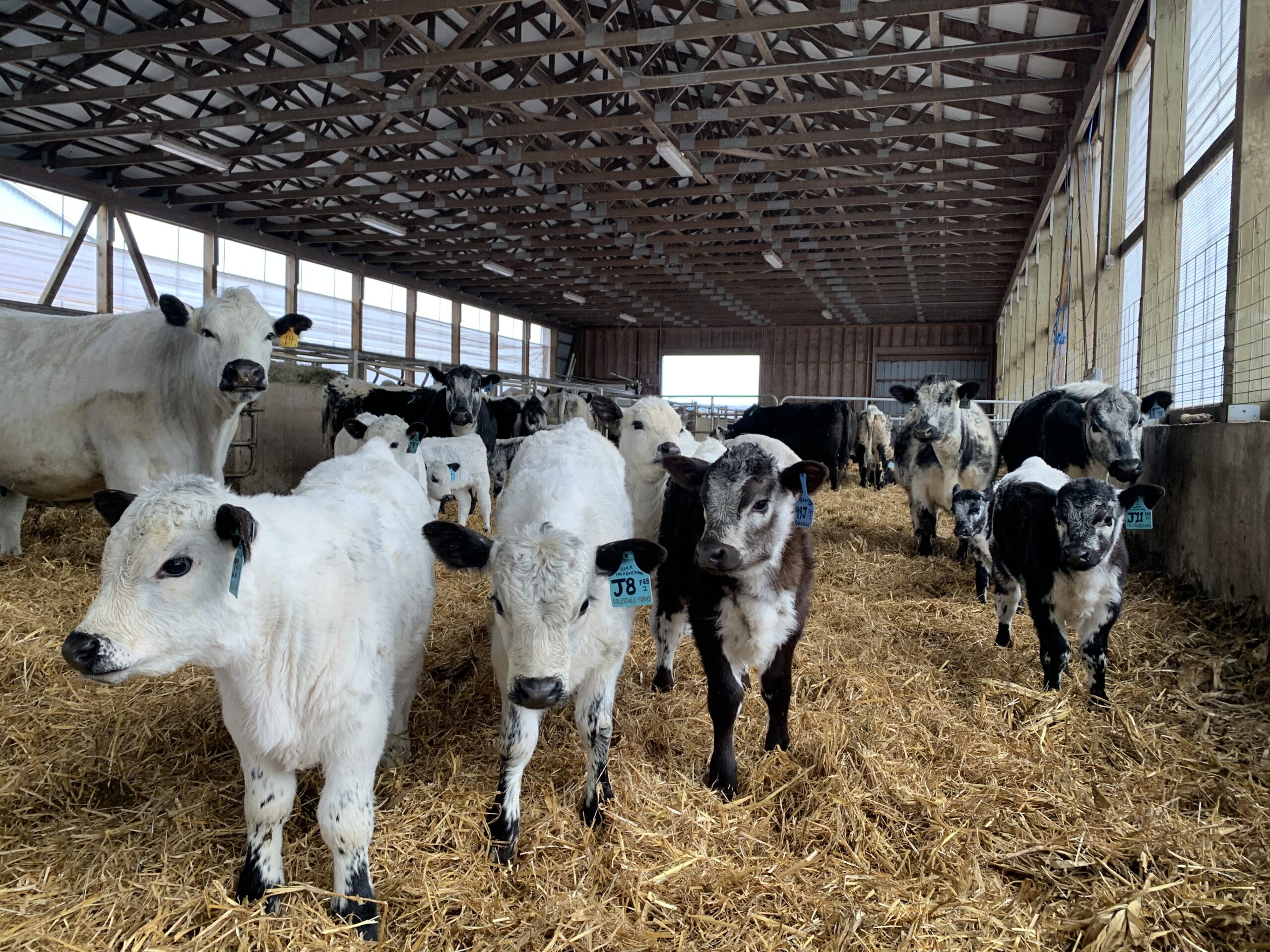
For Bob and Lindsey Coles, raising cattle is more than just a business. It’s a way of life. Bob grew up on a dairy farm and Lindsey grew up on a commercial beef farm. Today, the couple own and operate Colesdale Farms, located in Meaford, Ontario right on Georgian Bay. Both Lindsey and Bob have university degrees in agriculture, and both are passionate about raising cattle.
Colesdale Farms started in 2003. “We purchased the farm here in Meaford,” explains Lindsey. “Bob started it, but I was still in high school.”
The couple grew up just a few streets away from one another, but didn’t really get to know one another until later in life. “Although I was in my last year of high school, we knew we were going to be together,” Lindsey adds. Twenty-one years and four sons later, it would seem that Bob and Lindsey were right about their relationship, and right about pursuing their passion for cattle.
A happy accident
Both Bob and Lindsey are proud to call themselves “Speckle Park beef cattle breeders.” They attend local fairs to showcase their Speckle Park cows and they proudly attend the provincial Speckle Park show, which takes place in Paris, Ontario.
However, neither Bob nor Lindsey set out to breed Speckle Park cattle when they first started Colesdale Farms in 2003. In fact, they got into the business literally by accident.
“Back then we were milking cows,” recalls Lindsey. “We had a dairy farm with Holsteins, which took a bit of getting used to for me since I grew up with beef cattle, and that’s what I knew. So this was a bit different for me.”
The switch to Speckle Park cattle took place in 2018, right after a violent incident on the farm. “The Holstein bull attacked Bob,” recalls Lindsey. “It broke Bob’s back and left him questioning what he wanted to do.”
The fact that Bob survived the attack is a modern day miracle, according to doctors. “They couldn’t believe Bob walked away from that,” explains Lindsey. “He had so many injuries, and not too many people live to tell the tale when they’re attacked by a bull.”
This attack was a life-changing moment for Bob and Lindsey. “Bob had a life’s-too-short; what-am-I-doing moment,” Lindsey says. “Our retirement plan was always about going into beef, but we were too young to retire. Nonetheless, this was the start of a conversation that eventually led us to where we are today.”
Before committing to breeding Speckle Park cattle, Bob and Lindsey decided to give it a try, just to see how things would turn out. “My brother had a Speckle Park bull and a couple of cows,” recalls Lindsey. “We borrowed his bull to put on our Holstein heifers and we were really impressed with the cross-calves. That was how it all started, and we never looked back.”
A gentle breed, easy to feed
Bob admits that he made a mistake with the bull on that one fateful day. “I made the biggest mistake anybody could make,” he told Lindsey after the incident. “I turned my back on the bull, and you should never turn your back on an animal.”
According to Lindsey, Speckle Park cattle are a more docile breed, which takes some of the edge off working with them. “That’s one thing we fell in love with,” she says. “They’re a very gentle and timid breed. Every breed has their outliers, but overall, they’re very quiet cows and easy keepers. They also do really well on less feed, and their marbling is great. So, there’s a lot to like.”
The Speckle Park breed got its start decades ago in Saskatchewan, but wasn’t officially recognized as a breed until 2006. According to the Canadian Speckle Park Association, “Speckle Park cattle are known for their high-quality carcass, efficient feed conversion and their meat quality. Loyal to their baseline heritage, Aberdeen Angus, Teeswater Shorthorn and White Park, Speckle Park cattle offer a new and balanced approach to genetic improvement on behalf of the global purebred cattle sector, especially at the feedlot.”
Due to their smaller size, Lindsey says that Speckle Park cattle don’t need as much feed as a larger-frame breed would. “Most of our purebreds are fed oats and peas,” she explains. “There’s also some corn silage in the mix when they’re feeding the calves.”
That said, feed options vary, depending on a number of factors. “Everybody has their own situation,” says Lindsey. “We keep them in our Heifer barn, where we have a silo available to us, so that’s just how we feed them. What we put in the silo varies, depending on what’s in the field each year, and the price of feed. So if it’s better to keep the corn and sell it as grain corn, then that’s what we do. We usually do a dual purpose corn, and then it’s just oats and peas in the silo.”
Breeding and meat quality
Since their priority is breeding Speckle Park cattle, Bob and Lindsey don’t keep a lot of their cattle for meat sales. When they do, however, they like to alter the feed a bit. “We bring them across the road where we still have a TMR mixer from when we were milking,” Lindsey explains. “We feed them corn silage and haylage. We can increase the corn, decrease the hay, and that helps put the weight on them. Even with oats, peas and hay, they can almost gain too much weight.”
In addition to the general mix of hay, peas, oats and corn, the entire herd benefits from a mineral mixture that includes one special ingredient. “Our feed mill got us on a mineral [mixture] that has garlic in it,” explains Lindsey, “and the garlic really helps to reduce flies. We tried it this year, it seems to make a difference, so we’re quite happy with it.”
The only downside to adding garlic to the mix is the odour, according to Lindsey. “The barn smells… let’s say… interesting,” she laughs.
Two farms, two herds
Currently, Bob and Lindsey own and run two farms: one that sits on 100 acres, and another on 150 acres. “We have a commercial herd and a purebred herd,” explains Lindsey. “We’re trying to wean the commercial herd out and just have purebreds.”
Their commercial herd is made up of cattle from a mixed DNA pool. “Some of them are half Holstein, half Speckle Park,” says Lindsey. “Some are half Hereford, half Speckle Park. Some of them are other breeds. We don’t know what they are.”
As for the quality of the meat, Lindsey says that it’s on par, or a very close second to Wagyu beaf. “It’s very high quality, with excellent marbling,” she says. “I know that they win a lot of carcass competitions out west.”
Lindsey says that she has tasted the meat from both her purebred herd and from her commercial herd, “and you can taste the difference for sure,” she adds.
Future ambitions
The goal, as Bob and Lindsey plan for the future, is to continue to expand their purebred offering. “We want to keep growing the purebred herd,” Lindsey says. “If it were up to me, we would keep buying all the farms around us and filling them with Speckle Park cattle. I don’t think we could ever not have cows. It’s part of who we are. It’s our passion.”
Print this page
